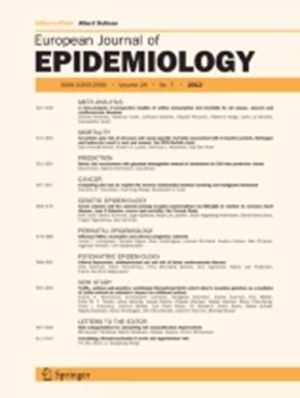Identification of individuals who benefit from omega-3 fatty acid supplementation to prevent coronary heart disease: a machine-learning analysis of the VITAL.
IF 5.9
1区 医学
Q1 PUBLIC, ENVIRONMENTAL & OCCUPATIONAL HEALTH
引用次数: 0
Abstract
Randomized controlled trials (RCTs) have demonstrated benefits of marine omega-3 polyunsaturated fatty acids (omega-3 FA) supplementation for the prevention of coronary heart disease (CHD). However, it has not been clear which individuals benefit the most from supplementation. We sought to develop an omega-3 effect score to stratify individuals according to their expected benefit from supplementation. Among the 25,871 randomized participants without a history of cardiovascular disease in the VITamin D and OmegA-3 TriaL (VITAL), we applied machine-learning (ML) approaches to predict individual treatment effect of omega-3 FA supplementation on 5-year CHD risk using 11 covariates pre-specified in the VITAL protocol. An omega-3 effect score was developed such that each covariate contributed linearly. ML algorithms effectively stratified participants by their expected benefit according to individual factors; for example, there was 1.21% absolute CHD risk reduction in the top tertile of the expected benefit, compared with the average effect of 0.47% risk reduction. Baseline diabetes, race, hypertension, sex, and fish intake contributed the most to the omega-3 effect score. Five-year CHD risk was 2.5% among those in the omega-3 arm and 3.2% among those in the placebo arm with omega-3 effect score ≥ 4 (upper 70th percentile), and 1.4% among the omega-3 arm and 1.3% among the placebo arm in those with the score < 4, respectively. The transportability of the score to the National Health and Nutrition Examination Survey (NHANES) data was confirmed. Although testing of the score in a new RCT is warranted, the proposed omega-3 effect score holds promise for guiding decision making for omega-3 FA supplementation in the US primary prevention population.识别从omega-3脂肪酸补充中获益以预防冠心病的个体:VITAL的机器学习分析。
随机对照试验(rct)已经证明了补充海洋omega-3多不饱和脂肪酸(omega-3 FA)对预防冠心病(CHD)的益处。然而,目前还不清楚哪些人从补充剂中受益最多。我们试图开发一个omega-3效果评分,根据个体从补充剂中获得的预期益处对其进行分层。在维生素D和OmegA-3试验(VITAL)中,25,871名无心血管疾病史的随机参与者中,我们使用VITAL方案中预先指定的11个协变量,应用机器学习(ML)方法预测补充OmegA-3 FA对5年冠心病风险的个体治疗效果。一个omega-3效应评分被开发出来,使得每个协变量都呈线性贡献。机器学习算法根据个体因素对参与者的预期收益进行有效分层;例如,在预期获益的前五分之一人群中,冠心病风险绝对降低了1.21%,而平均效果为风险降低0.47%。基线糖尿病、种族、高血压、性别和鱼类摄入量对omega-3效应评分影响最大。omega-3组的5年冠心病风险在omega-3效应评分≥4的组中为2.5%,在安慰剂组中为3.2%(上70百分位),在评分< 4的组中,omega-3组的5年冠心病风险为1.4%,安慰剂组的5年冠心病风险为1.3%。该评分与国家健康与营养检查调查(NHANES)数据的可移植性得到证实。虽然在一项新的随机对照试验中测试得分是有必要的,但提议的omega-3效果评分有望指导美国初级预防人群补充omega-3 FA的决策。
本文章由计算机程序翻译,如有差异,请以英文原文为准。
求助全文
约1分钟内获得全文
求助全文
来源期刊

European Journal of Epidemiology
医学-公共卫生、环境卫生与职业卫生
CiteScore
21.40
自引率
1.50%
发文量
109
审稿时长
6-12 weeks
期刊介绍:
The European Journal of Epidemiology, established in 1985, is a peer-reviewed publication that provides a platform for discussions on epidemiology in its broadest sense. It covers various aspects of epidemiologic research and statistical methods. The journal facilitates communication between researchers, educators, and practitioners in epidemiology, including those in clinical and community medicine. Contributions from diverse fields such as public health, preventive medicine, clinical medicine, health economics, and computational biology and data science, in relation to health and disease, are encouraged. While accepting submissions from all over the world, the journal particularly emphasizes European topics relevant to epidemiology. The published articles consist of empirical research findings, developments in methodology, and opinion pieces.
 求助内容:
求助内容: 应助结果提醒方式:
应助结果提醒方式:


